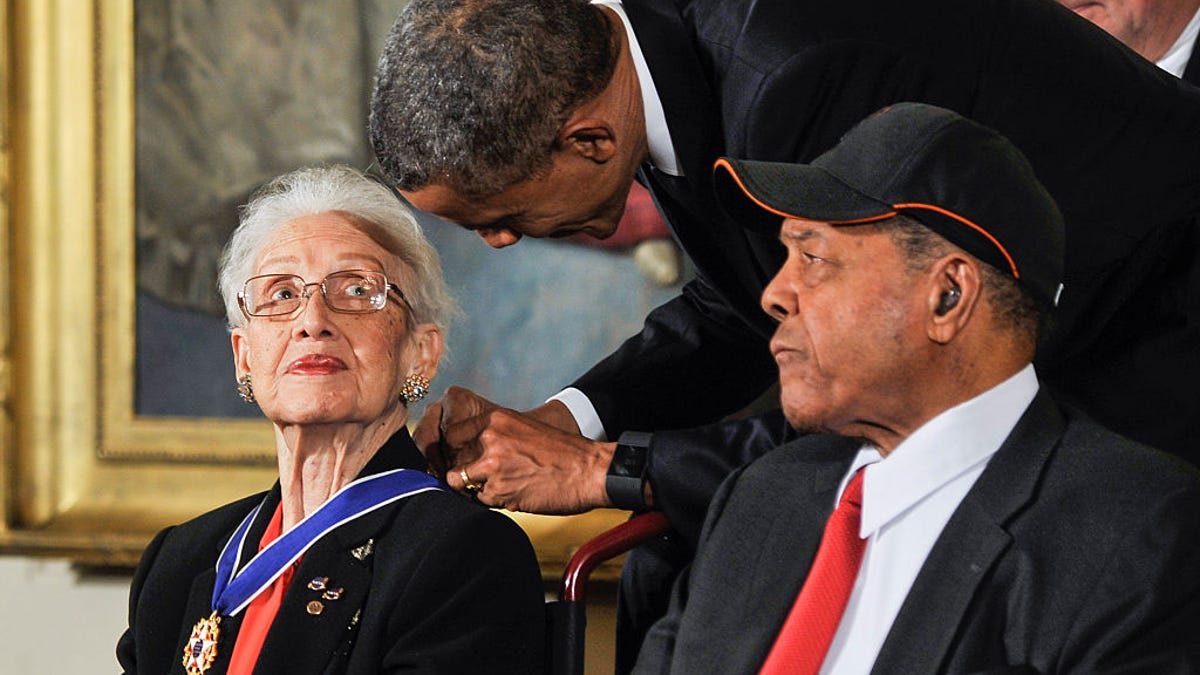'Hidden Figures' film: NASA's female math geeks get their due
Movie producer Mimi Valdés was shocked she hadn't known about the three women who helped to conquer space. Now she's spreading the word.

Katherine Johnson received the Presidential Medal of Freedom in 2015 from President Obama, but many still don't know her story.
When Mimi Valdés first heard the story of the three women mathematicians who helped put John Glenn in orbit in the 1960s, she almost fell out of her chair.
It seemed like a remarkable achievement, but how could she not have known about this?
Valdés is one of the producers, along with hip-hop artist and producing partner Pharrell Williams, of "Hidden Figures," a movie set for release December 25, that dramatizes the tale of NASA mathematicians Dorothy Vaughn, Mary Jackson and Katherine Johnson. The movie, based on a book of the same name, released in September, stars Taraji P. Henson, Octavia Spencer and Janelle Monáe.
"They were so instrumental in such an American, iconic moment in our history. It's really stunning," Valdés told CNET Friday during the Grace Hopper Celebration of Women in Computing. GHC, which took place this week in Houston, Texas. The annual professional and technical conference is hosted by the Anita Borg Institute, an organization focused on the advancement of women in technology.
"Hidden Figures" opens in December.
Vaughan, Jackson and Johnson worked at the Langley Memorial Aeronautical Laboratory in Virginia in the 1960s. They helped calculate the flight trajectories necessary to put Glenn in orbit. In 2015, Johnson received the Presidential Medal of Freedom.
This wouldn't be the first little-known story of women in tech to surface. There's the six women who programmed the ENIAC computer in 1946, or Ada Lovelace, who worked with mathematician Charles Babbage on his proposed general purpose computer the Analytical Engine and envisioned the modern computing age all the way back in the mid-1800s.
Making these little-known stories more widely known could help efforts to diversify the tech industry . A recent study by online educator Pluralsights and nonprofit Women Who Code found that one of the biggest career obstacles identified by women in technology was a lack of role models. And more diversity in tech means more innovation. A study from the Harvard Business Review found that having more diverse teams actually spurs innovation. Another study from the Peterson Institute for International Economics even found that companies with more women in leadership roles tend to be more profitable.
Valdés is hoping "Hidden Figures" will help send the message that a career in STEM (science, technology, engineering and mathematics) is a solid choice these days, no matter who you are.
"It's about exposure. It's not about whether women or people of color can do the work, because just the example of our film shows they can," she said.
Such exposure could help girls and young women realize, for instance, that math's strange symbols can rise up off the page to become applications in the real world. Even if you don't wind up calculating flight trajectories that send someone rocketing around the planet, you have the power to make software that people can use in their daily lives.
And in this increasingly digital age, the demand for that type of tech creation is intense.
"These are necessary careers and skills that the world needs to survive," said Valdés.

